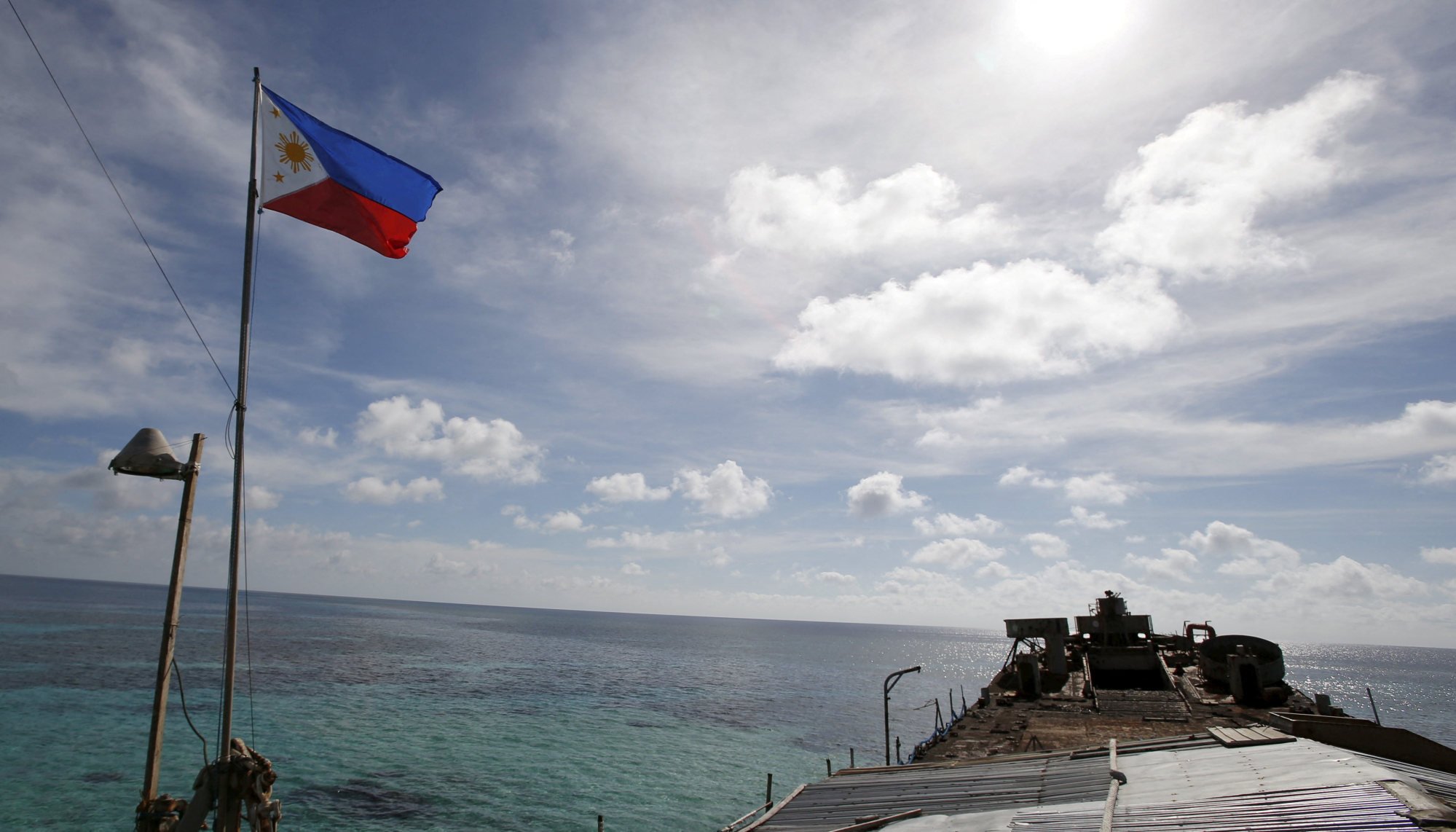The Philippine warship grounded 25 years ago at the Second Thomas Shoal in the South China Sea has caused serious harm to the marine environment and must be removed immediately to stop the damage, the Chinese government said on Monday.
The investigation report released by China’s Ministry of Natural Resources concluded that the BRP Sierra Madre, which the Philippine navy ran aground in 1999 to serve as an outpost in the disputed waters, has “seriously damaged the diversity, stability and sustainability of the coral reef ecosystems”.
It was Beijing’s latest statement regarding the South China Sea hotspot where clashes have occurred repeatedly between China and the Philippines for more than a year.
Do you have questions about the biggest topics and trends from around the world? Get the answers with SCMP Knowledge, our new platform of curated content with explainers, FAQs, analyses and infographics brought to you by our award-winning team.
“The Philippines should remove the warship and eliminate the source of the pollution to avoid persistent and cumulative harm to the coral reef ecosystem of Renai Reef,” the ministry said, referring to the reef by its Chinese name.
“Only by eliminating the source of pollution can we avoid continuing and cumulative harm to the Renai Reef coral reef ecosystem,” Xiong Xiaofei, chief scientist of the South China Sea Ecological Centre, operated under the ministry’s auspices, was quoted by China’s state media as saying.
China claims nearly the entire South China Sea but the Philippines, Brunei, Malaysia and Vietnam claim various overlapping areas.
The latest conclusion is based on assessments that used satellite sensing technology and on-the-spot studies conducted from April to June this year, the ministry said.
It found severe destruction of coral cover, disruption of the ecological balance of the benthic invertebrate population, heavy metal contamination, active phosphate and oil pollution, and human waste such as fishing nets, especially in waters surrounding the Sierra Madre.

The US transferred the retired World War II warship to the Philippine navy in 1976, which used it as a transport up through the 1990s. Its grounding, the report concluded, had caused “fatal damage to the coral reef ecosystem”, which would not recover unless the Sierra Madre is removed. Rusting of the ship’s hull and the discharge of human waste by Philippine soldiers stationed on it caused “long-term hazards to the healthy growth of the coral”.
The Second Thomas Shoal, known in the Philippines as the Ayungin Shoal, is within the 200-nautical mile exclusive economic zone of the Philippines but also claimed by China.
Since early 2023, there have been repeated incidents over Manila’s replenishment for troops stationed on the vessel. China has blocked Philippine resupply efforts to the outpost, leading to confrontations between the two sides.
Beijing said it had a “gentleman’s agreement” with the former Philippine president Rodrigo Duterte, who made improving ties with China a priority during his tenure, about the replenishment arrangement.
However, Duterte’s successor, Philippine President Ferdinand Marcos Jnr, who took office in 2022 has denied such a deal existed, and tensions between Beijing and Manila have escalated.
The most recent and serious confrontation occurred on June 17, when, according to Manila, a Chinese coastguard vessel rammed a Philippine resupply ship, injuring eight Philippine sailors, including one who lost his thumb.
China rejected that account, saying Philippine vessels attacked Chinese boats.
More from South China Morning Post:
- Chinese and Philippine officials meet for South China Sea talks after series of recent clashes
- South China Sea: most Filipinos want Beijing to follow rules-based order, survey shows
- China says Philippines rammed Chinese boats, attacked personnel in Second Thomas Shoal stand-off
- China warns Philippines against ‘dangerous behaviour’ near disputed Sabina Shoal
For the latest news from the South China Morning Post download our mobile app. Copyright 2024.





